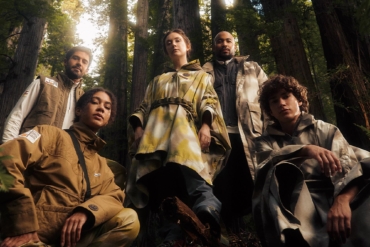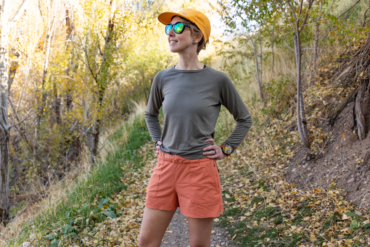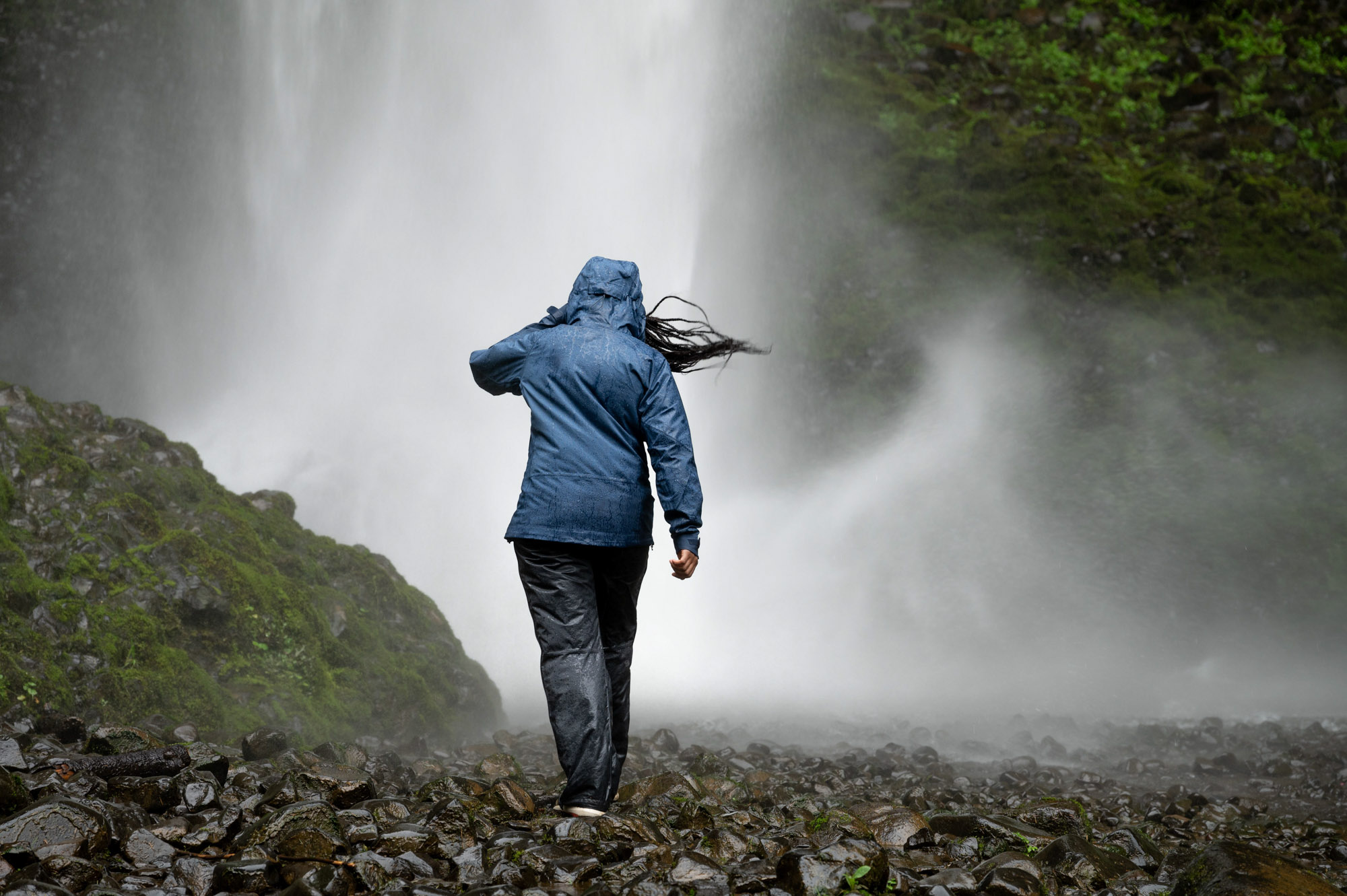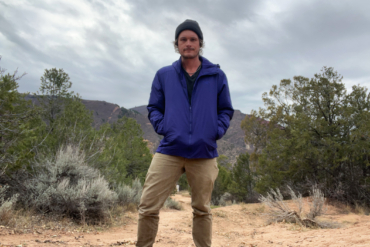A buddy once introduced me to the term “truck flannel,” a heavy flannel that you leave in your truck for those unexpectedly chilly evenings. Recently, I’ve also added “shacket” to my lexicon, which describes the same thing.
Call it what you will, both terms refer to what is technically a quilted flannel shirt. One that functions as part shirt, part jacket, thus “shacket.”
It’s an awesome garment, quite likely the most versatile in my closet, er, truck. And with the autumn nip coating the mountains white, it’s time to add one to your truck too.
Insulation? Shell? Dinner Coat? Yes.
Why does a guy who owns multiple high-end shell and insulating garments constantly reach for the old-school quilted flannel that may, or may not, currently smell like fish? Because he doesn’t care if it smells like fish (or smoke, or smoked fish), it’s easily washed, and it stands up to most any abuse.
Getting fish blood on a pricey Patagonia Gore-Tex Pro shell seems sacrilegious. But yanking in a lunker from a fast-flowing river while wearing a truck flannel seems like the right thing to do.
Would I wear that same truck flannel to dinner? Probably. And those who aren’t close enough to smell me may think it’s a halfway nice dress shirt.
Thank God for the loose dress-up standards of cities like Anchorage and Denver. In a town like Boulder, this shacket might as well be Armani.
But in all seriousness, a good quilted wool flannel works wonders as an insulating layer under a shell, or as an outer-facing layer in non-rainy weather. Shoot, they are usually thick enough to fend off some light rain and are pretty warm worn over base layers.
They’re not technical. But that is part of why I love them.
A Tougher, Less Flammable Jacket
Your puffy jacket will feel great on cool summer nights in the mountains. But if there’s a campfire, stay back! A single spark will burn a hole quickly through puffies and shells. That’s not how you want to treat an expensive piece of technical gear.
Instead, don your truck flannel. Most of them are a less-technical blend of wool or cotton and nylon, and they’ll be sure to fend off errant sparks.
They’re also plenty tough, so if you need to slide under your truck and wrench, or just carry a load of logs in your arms, you won’t hurt them much.
A Few Favorite Shackets
I currently have four shackets in my stable, and my favorite is the one I plucked from my long-passed grandfather’s closet. It is a quilted wool shirt made by the company Arrowhead, which I assume was made back in the ’80s or before.
It’s treated me well for a couple years of wear and still looks new. It reminds me of gramps trolling me across Minnesota lakes with a red Johnson outboard in a rented aluminum boat. Miss ya grandpa, thanks for the shirt!
Inexpensive quilted flannels are pretty easy to find online, at thrift shops, or in big box stores. Dickies makes a decent one for $33, and an Ebay search will turn up lots of used models. I found one for $7 in a quick search.
One GearJunkie editor found one he loved so much for $3 at a Salvation Army store that he patched the elbow pads when the fabric ripped.
But if you don’t mind investing in a higher-end piece, there are some new-to-market shackets that I’ve tested and decided are also awesome:
Columbia Kline Falls Shirt Jacket ($99)
This one is just coming to market this fall, but I’ve been testing a pre-release model since last winter. It’s a rugged shirt that draws attention.
The bold colors and padded “shooting jacket” style are eye catching. I’ve worn it a lot, and it’s warm, comfortable, durable, and gets a lot of comments — mostly good. It’s largely cotton, so it’s low tech and not good for wetness, but it has some leather trim. So fancy!
Even with the trim details, it still has basic quilted goodness to keep you warm. You can get one now at Cabela’s.
 Icebreaker MerinoLOFT Helix Reversible Shirt
Icebreaker MerinoLOFT Helix Reversible Shirt
This is about as techy as a shacket should get. Made with merino wool insulation and a water-repellent nylon, the Helix is reversible, giving you either a nice flannel or a black coat suitable for fairly upscale outings.
That fits because it retails for $250. Merino tends to be pricey, but this one, while very nice, is pretty far out on the shacket cost scale.
 Mountain Hardwear Yuba Pass Fleece Lined Jacket
Mountain Hardwear Yuba Pass Fleece Lined Jacket
Mountain Hardwear is known for technical apparel, but this subdued shirt is fairly simple.
The Yuba Pass is lined with the brand’s ThermalQ fleece, making it extremely warm. It hits the mark for an evening around the campfire, with a tough cotton/polyester blend face fabric. The loose fit pulls over other layers easily.
This is the warmest of the truck flannels I’ve worn and a pretty good deal at $120.
Pick one up if you want to stay warm while looking casual.
Choosing a Shacket
The models selected for this article all have similar qualities I like: tough face fabric, soft interior, and quilted insulation.
While these high-end, name-brand models are really sweet, those hunting for bargains should be on the lookout for a few things that point to quality construction. My favorite Shacket is easily 30 years old, still looks new, and could probably be bought for almost nothing second hand.
If you find a shirt with these attributes, even at a garage sale or thrift store, snag it!
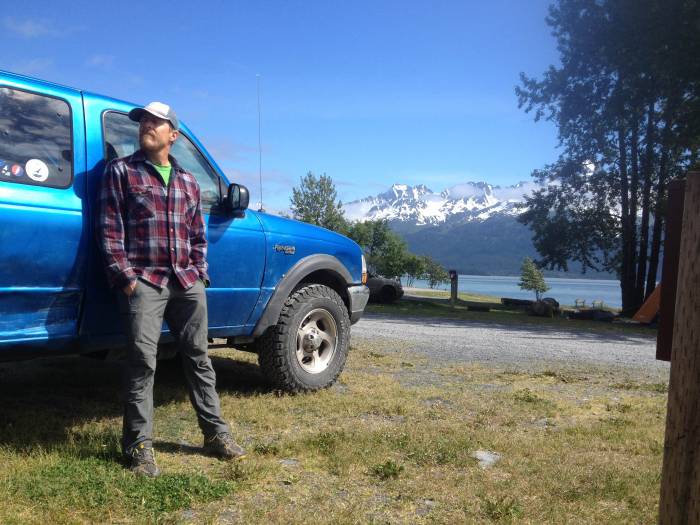
Buttons and snaps: Check that they are heavy and well-attached to the garment. Your shacket will likely take a lot of abuse, and you don’t want them ripping off when you catch them on a log or branch.
Wool: If you can find inexpensive quilted wool, buy it. Wool is the king of flannel material as it’ll keep you warm when wet. It comes with a premium price at retail.
Wool flannels can be found at thrift shops for surprisingly good prices. If you’re lucky enough to spot one that fits, grab it immediately.
Face fabric: You want this to be tough. Pull on it a little and see if there is space between the yarns. The weave needs to be tough and tight. The exception is wool, which may feel fuzzy. Just be sure the wool is thick and tough.
Liner: Try to find a comfy liner, as truck flannels are great over a t-shirt in the spring, summer, and fall when temps drop at night. Smooth nylon fabric is particularly nice as it slides easily over other layers or feels good next to the skin.
Go out and get yourself a truck flannel. Splurge and get a new one, or scour your local thrift store for an oldie-but-goodie. Toss it in the cab of your truck for those awesomely chilly fall evenings, and don it when the campfire roars. Your technical outerwear will thank you.


 Icebreaker MerinoLOFT Helix Reversible Shirt
Icebreaker MerinoLOFT Helix Reversible Shirt Mountain Hardwear Yuba Pass Fleece Lined Jacket
Mountain Hardwear Yuba Pass Fleece Lined Jacket
